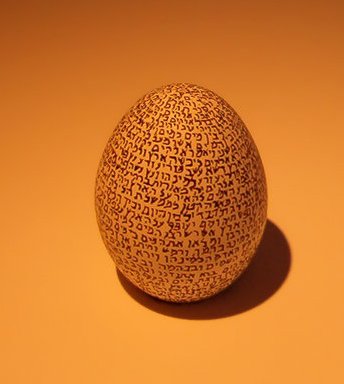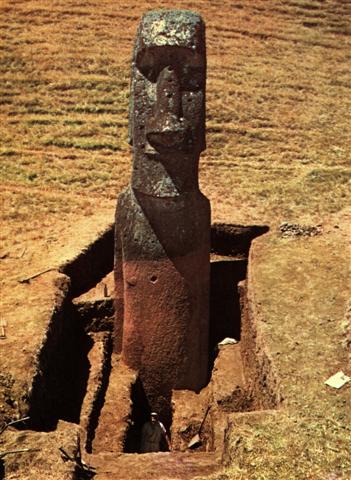The canoe of the Sun king,
evidently 'personified' by that of Hotu A Matua, went from east to west along the northern coastline of Easter island [E:75], whereas Makoi went along alone on land assigning names [E:38] in the opposite direction - similar to how the Moon rose in the west and descended in the east in contrast to how the Sun rose in the east and descended in the west.
Before Julius Caesar launched his new Sun calendar the ancient calendar defined fewer days for the cycle of the year. January, e.g., measured not 31 but 29 days. Together with February (28 days also in the old calendar) this made 29 + 28 = 57 days.
All this (and more) could have been well known by the creators of Manuscript E, and it could have influenced their numbering sequence for the place names Makoi gave. Maybe we should perceive the missing number 55 as a way to set apart the last 5 nights ('when gods were born'):
... In the Gregorian calendar there sometimes will be a leap day as the last day of February: February 29 is the 60th day of the Gregorian calendar in such a year, with 306 days remaining until the end of the year. (Wikipedia) So in an ordinary year the last day of February is the 59th day (as if to obstinately remind us of how the synodical month is the origin of time). Instead of sometimes adding leap months to the basic measure of the year, viz. 377 - 22 = 355 days, Caesar ignored the phases of the Moon and defined a basic solar measure of 365 days, with a regularly inserted leap day every 4th year: The leap day was introduced as part of the Julian reform. The day following the Terminalia (February 23) was doubled, forming the 'bis sextum - literally 'double sixth', since February 24 was 'the sixth day before the Kalends of March' using Roman inclusive counting (March 1 was the 'first day'). Although exceptions exist, the first day of this bis sextum (February 24) was usually regarded as the intercalated or 'bissextile' day since the third century. February 29 came to be regarded as the leap day when the Roman system of numbering days was replaced by sequential numbering in the late Middle Ages ... 54 Vai Rapa could therefore correspond to Terminalia. 54 = 31 (modern number of days in January) + 23 (→ February 23 → Terminalia). The Romans counted also the first day of March as if it was belonging in the old year; before the Kalends of March. 29 (January) + 23 (Terminalia) + 6 = 58 (= 2 * 29).
Possibly the creators of Manuscript E crossed
over
In view of the importance of number 29 (the dark night of the Moon) as an indicator of the birth place of the new month - and also because we have found this measure used at the viri type of glyph - we can imagine the 6 Roman days immediately before the Kalends of March were regarded as a similar prime period of birth.
Rano Raraku was where the stone statues emerged from the ground - as if representing the day when the Sun returned:
... Based upon the fact that toko in New Zealand also means 'rays of light', it has been suggested that the original props which separated and held apart Sky and Earth were conceived of as shafts of dawn sunlight. In most Polynesian languages the human and animate classifier is toko-, suggesting a congruence of semantic and symbolic meaning between anthropomorphic form and pole or post. Tane as First Man and the embodiment of sunlight thus becomes, in the form of a carved human male figure, the probable inspiration for the moai as sacred prop between Sky and Earth. The moai as Sky Propper would have elevated Sky and held it separate from Earth, balancing it only upon his sacred head. This action allowed the light to enter the world and made the land fertile. Increasing the height of the statues, as the Rapa Nui clearly did over time, would symbolically increase the space between Sky and Earth, ensuring increased fertility and the greater production of food. The proliferating image, consciously or unconsciously, must have visually (and reassuringly) filled the dangerously empty horizon between sea and land, just as the trees they were so inexorably felling once had ... |
||||||||||||||||||||||||||||||||||||||||||||||||||||||||||||||||||||||||||||||||||||||||||||||||||||||||||||||||||||||||||||||||||||||||||||||||||||||

.jpg)

